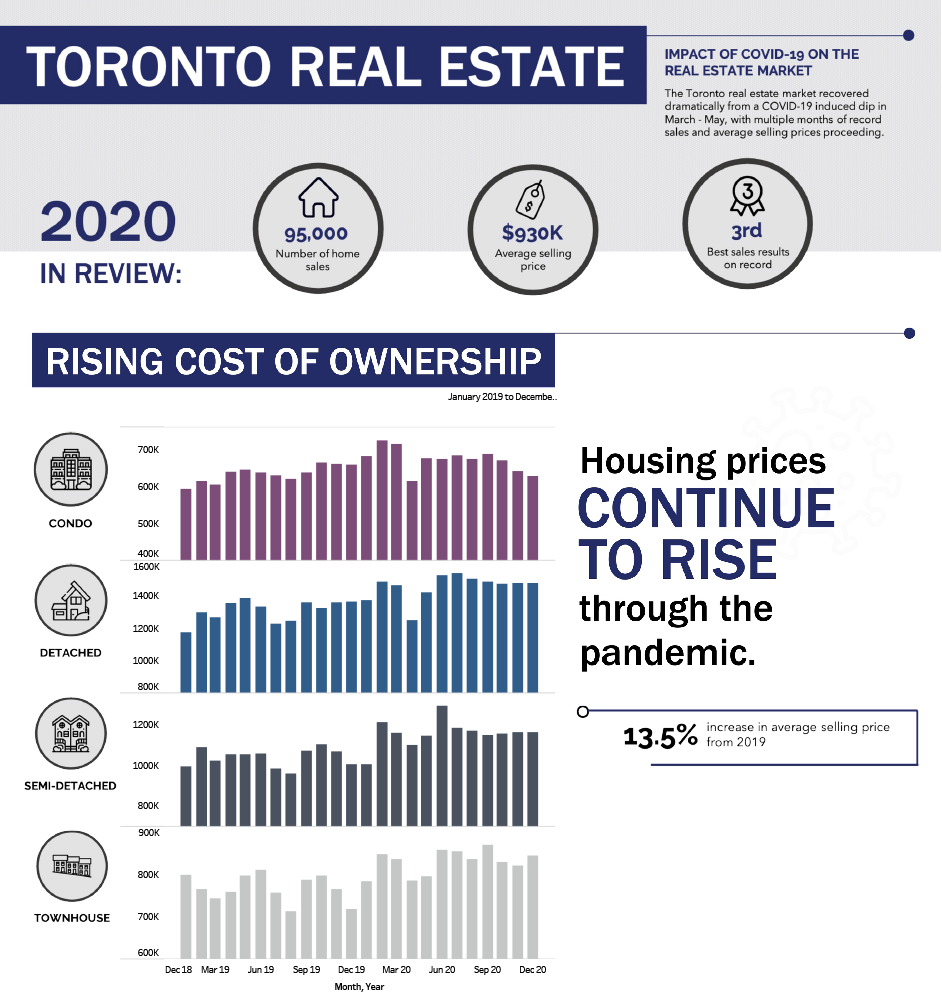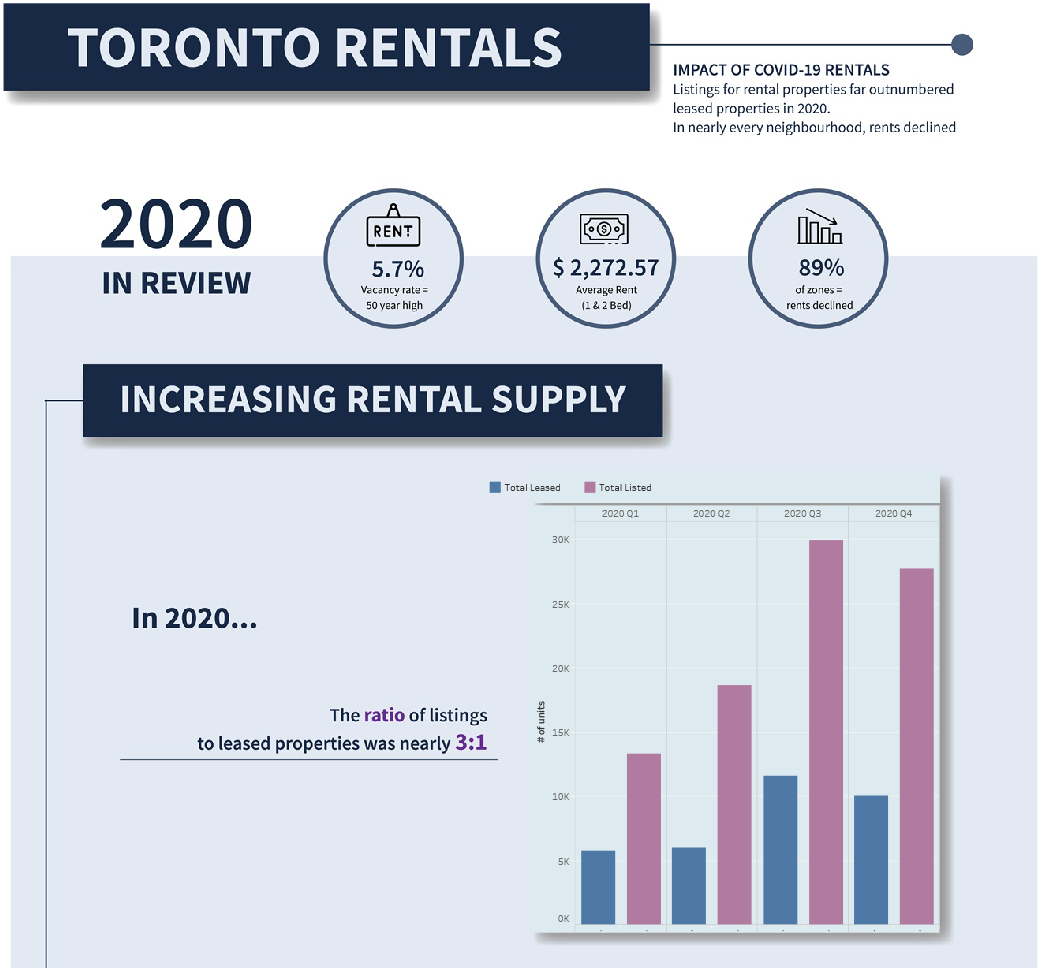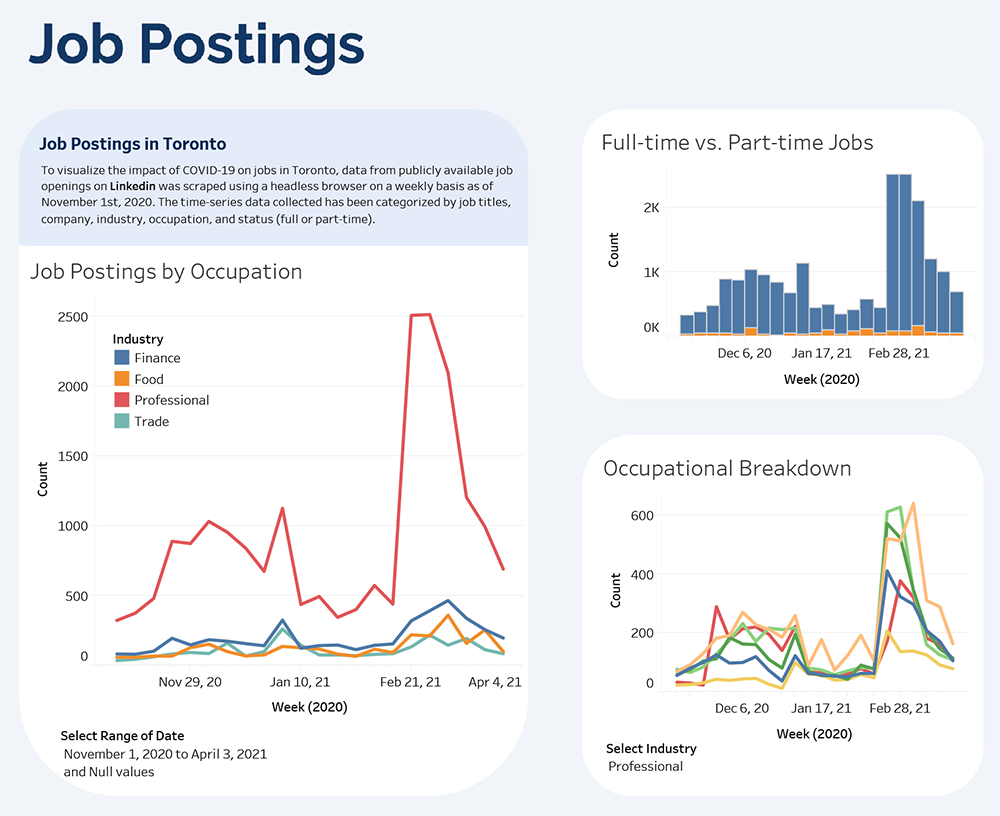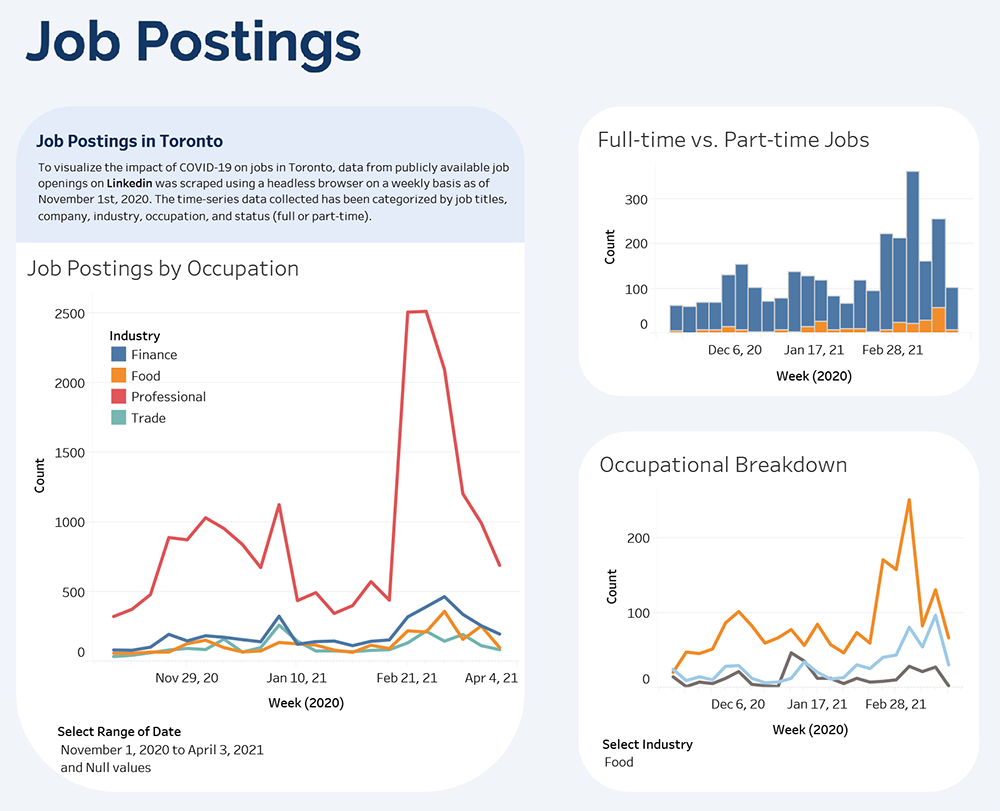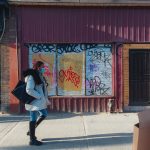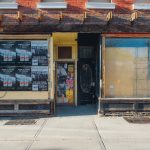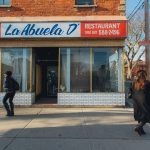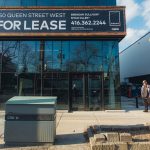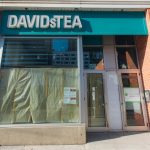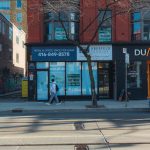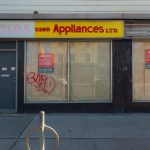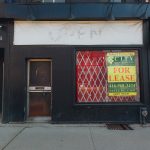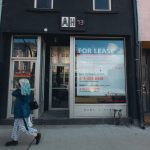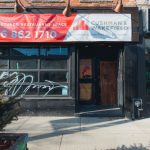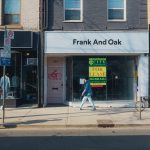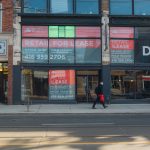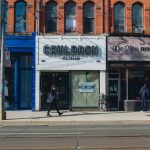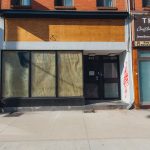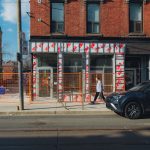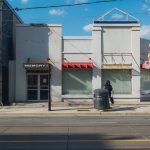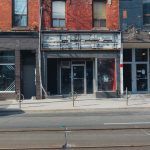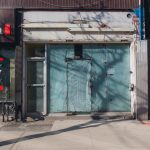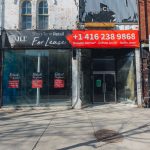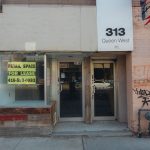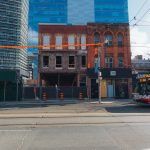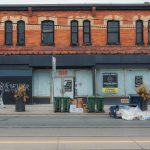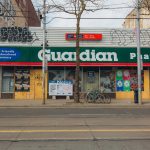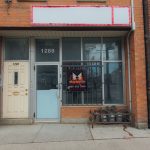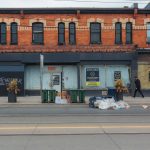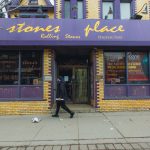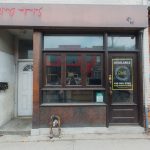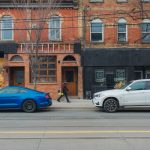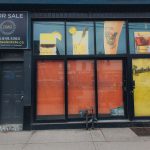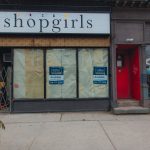The post Toronto after the 1st Wave: How COVID-19 affected three key markets appeared first on Spacing Toronto.
]]>In the fall of 2020, a University of Toronto research team set out to track key metrics from the city to assess the impact of COVID-19 on Toronto’s public health, economic well-being, and urban vibrancy. Since then, we published six data-driven dashboards documenting a wide range of topics—public health, mobility, restaurants, economic vibrancy, work, and housing. While the internet is flooded with devastating news surrounding this ‘once-in-a-century’ health crisis, our data analysis also suggests many once-in-a-century trends in Toronto’s housing, labour, and restaurant markets. Below, we identify some highlights of our findings to date.
HOUSING MARKET
Since the start of the pandemic, Toronto’s housing market has behaved very oddly, with home prices and rents going in opposite directions.
Data from our housing dashboard show that although COVID-19 caused a dip in home sales in April, 2020, the markets rebounded quickly and reached a record-high within two months.
With the significant market rebound, re-sale prices also rose. A 13.5% increase in average selling price was observed in 2020 compared to the previous year. The reasons might include the combination of low mortgage rates and work-from-home policies. Many middle- and high-income households also took advantage of the pandemic to accelerate their purchasing plans to buy first homes, second homes, or vacation homes.
Unusually, rising home prices did not boost rental rates. Our research shows that rents dropped significantly in both short-term and long-term rental markets.
Once-prime locations became less appealing when city life and commute to work are no longer priorities. In fact, the high population density and high costs of living in Toronto caused many residents to seek residence elsewhere, according to data from Statistics Canada. A look at geographical changes in rents reveals an 8.3% increase in rental prices in Scarborough compared to a 24.6% drop in Toronto’s city centre.
The divergent trends in home sales and rental prices reflect what economists refer to as a “K-shaped” recovery, in which certain industries pull out of a recession while others stagnate. While white-collar professionals in finance and tech are looking for bigger homes for their families to work from home, hourly workers are hit by low wages, reduced hours, or even loss of jobs as physical stores and restaurants close. According to a report published by the Financial Accountability Office of Ontario (FAO), the labour market showed a 27% decrease in low-wage jobs while employment in other wage categories increased by 1.4% this past year.
LABOUR MARKET
One way to assess the health of the labour market is by looking at new job postings online. By scraping job postings on LinkedIn from November 1st, 2020, we observed trends related to the K-shaped economic recovery in job market postings. Uncertainties still exist in the food service and retail trade industries due to on-going restrictions, however we observed a surge in white-collar job postings.
In February, 2021, the number of new postings doubled for professional jobs such as engineers, designers, consultants, and accountants. The surge reveals an opportunistic future post-pandemic—companies may have started to collect resumés in anticipation of improved prospects with respect to public health and economic activity.
Despite the surge in job postings, the concern is that hard-hit sectors, such as retail trade and food service, are not showing signs of recovery. With the roll out of vaccines and the eventual lifting of health/distancing restrictions, a recovery will take shape. However, to accelerate the recovery processes and to avoid permanent job losses, workers and small businesses would benefit from extended unemployment benefits or government subsidies.
RESTAURANT MARKET
We gauged the state of the city’s restaurant sector by monitoring restaurant closure status on Yelp. Our data showed that 244 new restaurants opened between May and November of 2020, against 214 closures. By looking at maps of restaurant openings and closures, the most-sought after locations—major subway lines and popular tourist areas—have the highest rates of new openings. As the pandemic continues, businesses are changing to adapt to the new normal. By examining the types of restaurants that opened and closed, we saw a shift from traditional sit-down restaurants (e.g. Chinese, Hong Kong, and Breakfast & Brunch) to more grab-and-go styles (e.g. sandwiches and cafes).
In addition, due to the rise of ‘on-demand culture,’ COVID-19 has driven gig economy activities and is contributing to the growth of food delivery services such as UberEats and DoorDash. The availability of gig worker positions (e.g. food delivery driver) may also offer some financial relief for those seeking additional income. At the same time, this labour trend presents new challenges related to low-wage gig economy work, as well as COVID-19 safety issues.
Interestingly, restaurants located in food courts near major subway stations have shown a 100% survival rate. Restaurants at these locations might be chains with owners who wish to keep prime locations despite temporary losses. The Commerce Court near Union Station, for example, has a great number of restaurants, most of which are chain outlets that offer quick bites such as Fast Fresh Foods and Z-Teca Gourmet Burritos.
Small- and medium-sized businesses are the backbone of our economy. To help these businesses endure the pandemic, consumers need to be conscious of whom they support. The notion of buying locally should be encouraged to sustain local business owners. In addition, local restaurants will likely benefit from partnerships with food delivery services to offer an online shopping experience for consumers. At the start of the pandemic, some restaurant owners reported that more than half of their revenues came from sales on these apps. Perhaps as a short-term relief, the government should continue to cap delivery commission fees for areas that are impacted by public health restrictions. In addition, to avoid high commission fees, a long-term solution is for restaurants to start their own delivery services. A vegan pizza restaurant in Toronto, for example, coordinated delivery with neighboring restaurants.
Although Ontario is once again in a period of lockdown, our analysis suggests that some industries and sectors are likely to be more resilient to COVID-19 shocks. Based on patterns observed following each of the first two waves, and with the current rollout of vaccines, the City of Toronto’s economy is likely to recover quickly from the COVID-19-triggered “recession” once public health risks are further reduced and health restrictions are lifted.
As cities start to recover, we have an opportunity to assess changes and evaluate the effectiveness of government responses. Our research, Toronto After the First Wave: Measuring Urban Vibrancy in a Pandemic, allows for retroactive and retrospective analysis on how the pandemic had impacted key sectors in the city. As we continue to track Toronto’s road to recovery, we hope to help policy makers and public health officials become better informed when making decisions in the context of COVID-19.
Youjing Li is a graduate student at the University of Toronto’s iSchool. She holds a Bachelor of Engineering degree from the University of Waterloo. Follow her on twitter at @li_youjing. Shauna Brail is an associate professor at the Institute for Management & Innovation, University of Toronto. She is also an affiliated faculty at the Innovation Policy Lab, Munk School of Global Affairs and Public Policy, University of Toronto. Follow her on twitter at @shaunabrail.
Toronto After the First Wave, led by Prof. Brail, is funded in part by MITACS. Youjing is a research assistant responsible for data visualization. Other team members include Cindy Thai, Ecem Sungur and project alumna Katherine Hovdestad.
The post Toronto after the 1st Wave: How COVID-19 affected three key markets appeared first on Spacing Toronto.
]]>The post LORINC: Is the new federal budget green or red? appeared first on Spacing Toronto.
]]>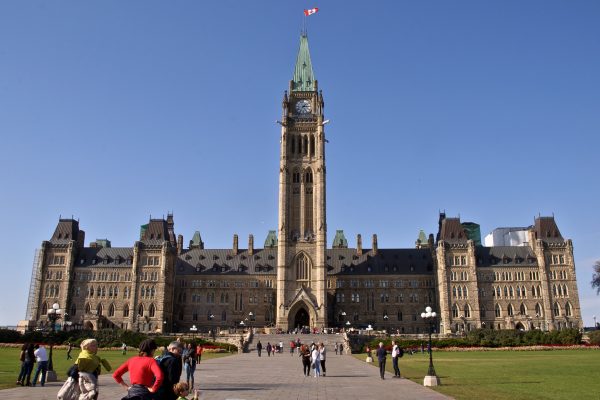
After the federal Liberals’ $10/day childcare pledge, there’s no doubt that climate spending was the other big political bell-ringer in Monday’s $100 billion federal budget, and not without good reason. A decent chunk of the $17.6 billion earmarked from carbon mitigation will land in recession-mired Alberta, in the form of subsidies to help heavy polluters cut emissions, funding for carbon capture and storage and other direct-to-industry grants.
Beyond the Liberals’ attempts to re-direct a region so tragically dependent on fossil fuel, there was also $4.4 billion set aside for no-interest homeowner loans up to $40,000 for “deep energy retrofits” — insulation, better windows, solar panels, high-efficiency furnaces, etc. The branding is a subtle throw to those people who spend their time mired in these issues.
This move, clearly meant to appeal nationally to middle-class voters, seems, at first blush, like a welcome effort to confront one of the most intransigent realities of climate mitigation. In Canada, buildings produce 40-50% of emissions, and a great many of those are houses with all the environmental failings: draughty windows, uninsulated roofs, gappy double-brick walls, wheezing furnaces, etc. Find an electrical outlet on an exterior-facing wall on a cold, blowy day and see if you get a bit of chill coming through. Now multiply by, well, a lot.
How far will $4.4 billion go? A back-of-the-envelope calculation – 150,000 to 200,000 homes, depending on the size of those loans. Consider that Canada has 9 million dwellings that are either detached, semi-detached, townhouses or mobile homes. The program lasts five years, so do the math. Even with maximum take-up, the retrofitting of Canada’s residential housing stock would take generations. And we don’t have generations. We have a decade.
The other question with this kind of program has to do with whether we’re really getting bang for those retrofit bucks. Any decent home energy consultant will or should tell their clients that unsexy investments, especially insulation, are more impactful than, say, solar panels, even though nothing shouts environmental consciousness like a roof-top installation.
Ideally, those loans should be based on this kind of prioritization. It will also be revealing to see if any of that funding is directed towards air-source heat-pumps and electric water heaters in order to replace natural gas hook-ups. Heat pumps don’t work in all settings, but, in the long-run, this technology is crucial if the goal is to wean homes from natural gas, which still accounts for the largest share of all urban emissions (in the City of Toronto, about 50%).
Then there’s the location issue. All things being equal, houses in regions that rely on both natural gas for heating and fossil fuel for electricity – Alberta, Saskatchewan, parts of Atlantic Canada — should ideally get preference for deep retrofit loans over dwellings in those in areas where energy comes mainly from hydro-electricity (namely Quebec, Manitoba and B.C.). But the catch is that in the fossil-fuel dependent regions, retrofits that shift home energy usage from gas to electricity — e.g., an electric hot water heater or a hook-up for an EV — won’t actually reduce carbon emissions.
Indeed, the best way for Ottawa to make a significant dent in urban-related emissions is to aggressively push to de-carbonize the electricity grid in every single province and region — a step that enables low-carbon electric vehicles while creating the necessary conditions that allow building owners to uncouple from the natural gas grids that crisscross every city.
On this front, the budget had very little to offer, which may not be surprising, given that over 80% of Canada’s electricity comes from hydro or nuclear power. Gas- and coal-fired generation accounts for just 17% of all electricity production. While that number may not seem so big, the coal-fired generation still embedded in Canada’s electricity grid is a major problem in terms of meeting the Paris targets. While the use of coal and gas has been falling, a recent federal study points out that “[d]espite accounting for less than 7% of total electricity generation, coal was responsible for 63% of electricity related GHG emissions in 2018.”
Four-fifths of the coal-fired generating capacity in Canada is in Alberta and Saskatchewan. What’s more, coal remains a significant export product for western Canada, worth over $7 billion a year, according to federal statistics. Needless to say, this is the same region that produces most of the natural gas consumed in homes in cities like Toronto.
The tight coupling of coal-fired generation, natural gas for residential heating and energy inefficient homes is an extraordinarily stubborn structural barrier to carbon reduction. It seems to me that any plan that purports to reduce Canada’s contribution to global warming has to be way more intentional about connecting these dots than what was in the Liberal budget.
Certainly, carbon pricing will make a difference. Some recent research estimates that when the price eventually tops $80-a-tonne – about 2025 — coal-fired electrical generators will no longer be cost competitive for huge utilities like TransAlta. Eventually, carbon pricing will make the case for alternatives to residential natural gas more attractive, too.
From where I sit, the feds shouldn’t sit back and wait. Rather, the government ought to use its fiscal levers to drive capital investment in fossil-fuel free electricity while developing focused incentives for homeowners and landlords to disconnect from gas. And while they’re at it, the Liberals would do well to toughen up the energy efficiency minimums in the national building code to ensure that future development is as carbon neutral as possible. Such moves would also create green jobs in the industry that produces energy efficient building materials.
Perhaps all these granular elements will find their way into the implementation of the Trudeau government’s much hyped and costly climate plan. But the Liberals’ green book has a way to go before it moves beyond the realm of political signalling.
The post LORINC: Is the new federal budget green or red? appeared first on Spacing Toronto.
]]>Free COVID-19 testing for children and staff could help keep Ontario camps open this summer while the pandemic drags on, organizers say.
Source: Organizers ask for free testing for kids and staff to keep Ontario summer camps open
]]>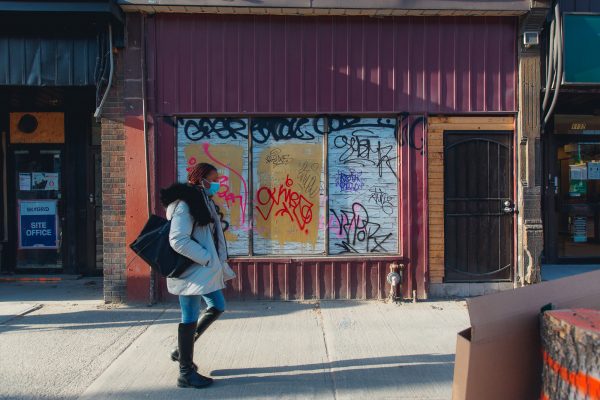
Queen Street West has always been a revolving door of independent businesses. Starting at the bottom of Parkdale, Queen Street is an entryway to the downtown core with a colourful mishmash of fabric stores, live venues, trendy fashion independents, record stores, the whole gamut of bars and restaurants, and a couple David’s Teas for good measure.
But these days, Queen Street is disappearing.
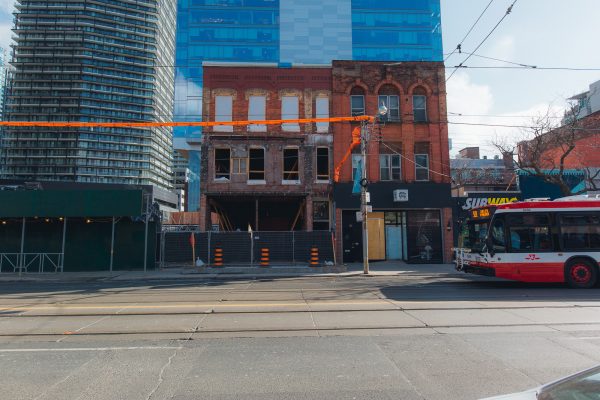
That is to say, it was already disappearing before the COVID-19 pandemic struck Toronto the Great. Due to higher-than-Drake-on-the-CN-Tower rents along the hip Queen West strip, the independent shops had already been uprooting to the more affordable Dundas Street. Then the match strikes. The gasoline is poured. A global pandemic hits. One year later, Queen Street sports a badly bandaged face. A littering of For Lease signs. Swaths of brown paper spanning storefront windows. A mashing of metal security fences. Crude graffiti tags marking the carcasses of long-vacant businesses. Something of an urban tombstone inked in block letters with cheap white spray paint.
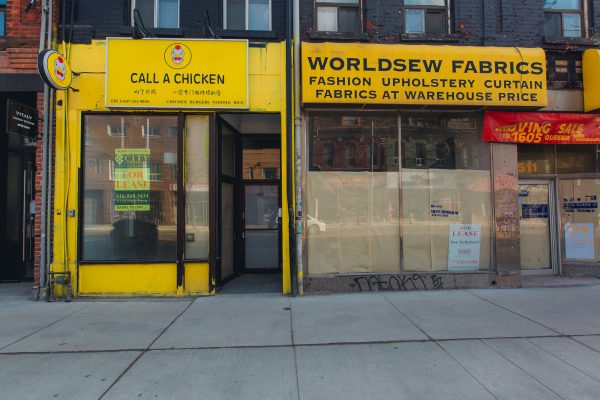
Like many a Torontonian, I love to walk Queen Street. It’s always held an air of creative independence, a delightful collision of art and culture. Where weird is accepted. The charm and stories run deep on a strip like Queen Street West, which Vogue magazine named the second coolest neighborhood in the world just over five years ago. That’s why it’s tough to see more and more businesses disappearing behind For Rent signs.
There are store-sized puncture wounds piercing the woven landscape that is Queen Street. At the beginning of March 2021, I noticed more than the usual number of closed businesses along Queen West. Dozens upon dozens of closed storefronts, sometimes three to four stores in a row. I walked along Queen Street from Parkdale to MuchMusic to photograph every permanently closed business I saw.
This is what I saw.
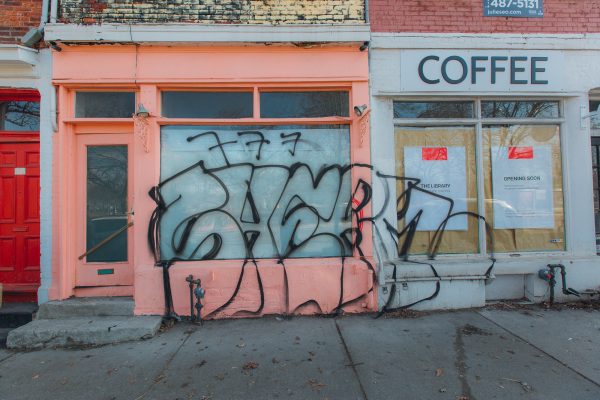
Every day we see the daily infection case counts for COVID-19. The “daily COVID numbers” we call them. What we don’t see, however, is the daily tally of businesses, especially the independent mom-and-pop shops, that are going under. I see Queen Street as a metaphor for all the other independents not just in Toronto, but across Canada, that just can’t hang on any longer. And that number is growing, daily. Here’s a visual representation of one year into the pandemic along Queen Street West.
All photos © Ryan Bolton, 2021 (ryanbolton.ca)
The post Vacant Queen Street West: a pandemic photo essay appeared first on Spacing Toronto.
]]>